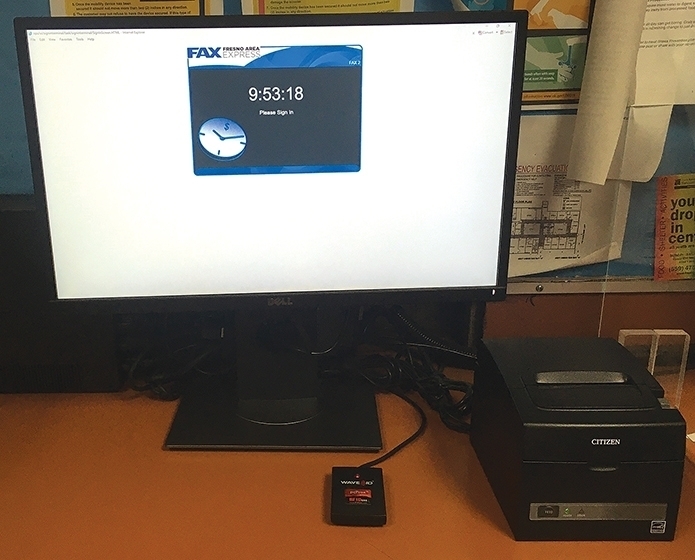
When COVID-19 struck public transportation systems nationwide, “social distancing” became a paramount concern for an industry which had never really considered the practice. But the City of Fresno’s transit department – consisting of 17-fixed routes provided by more than 100 vehicles and 279 drivers – was already on its way toward implementing an ideal solution to this novel problem.
In late April, coincidentally when the COVID-19 crisis and state government shutdowns were in full effect, the city’s Department of Transportation launched its employee Sign-In Terminals. The terminals, which are part of the operations and workforce management suite by Trapeze Group, allowing contactless shift sign-ins for drivers and dispatchers. Previously, driver sign-in was handled at the department’s dispatch window with shared pens and paper.
Joe Vargas, assistant director of the City of Fresno’s Department of Transportation, said the terminals are ideal for physically distancing and keeping employees safe. Vargas said that the department already uses Trapeze software throughout the system, including for maintenance work orders, CAD/AVL, and now Transit Workforce Management (OPS) – an integrated operations and workforce management solution which integrates with the new Sign-In Terminals.
“Fresno’s Sign-In Terminal launch timing was somewhat fortuitous,” Vargas said. “We already planned to utilize the service to expedite driver sign-ins; and we already had implemented driver ID cards with proximity readers. When the COVID-19 crisis hit our region, the department was fortunate to be mid-transition.”
Beyond its COVID-19 prevention capabilities, Vargas said increased communication is the biggest benefit Fresno has yielded from the system.
“Now, upon signing in, a driver receives their assignment on a printed receipt,” he said. “That receipt also notifies the driver when critical certifications, such as their driver’s license, medical, and VTT, are set to expire. We are also able to provide notes on those receipts to inform drivers about route-specific detours and other urgent items.”
Furthermore, the system allows for administrators to control or deny remote sign-ins. If a supervisor needs to speak to a specific driver, the terminal can deny remote access and then direct the driver toward that meeting. Vargas said that Fresno is taking full advantage of this communication tool, as it allows for much less paper being used to communicate with drivers.
Thus far, Fresno has not received any negative feedback – a notable feat for new technology rollouts, as many transit agencies are aware.
The drivers’ union has been a great partner with the department, Vargas said, helping to spearhead the technology and the implementation of Trapeze OPS and the Sign-In Terminals.
Drivers are still getting accustomed to the process, but Vargas said that the information and certification “count-downs” printed on the terminals’ daily receipts have been overwhelmingly accepted.
“It’s really just a more efficient way of signing onto their work, as opposed to going up to the window and having a packet full of assignments that they have to sift through,” Vargas said. “I think the union and the drivers themselves have become such positive adopters because the system really streamlines the process of checking into their assignments and receiving communication.”
